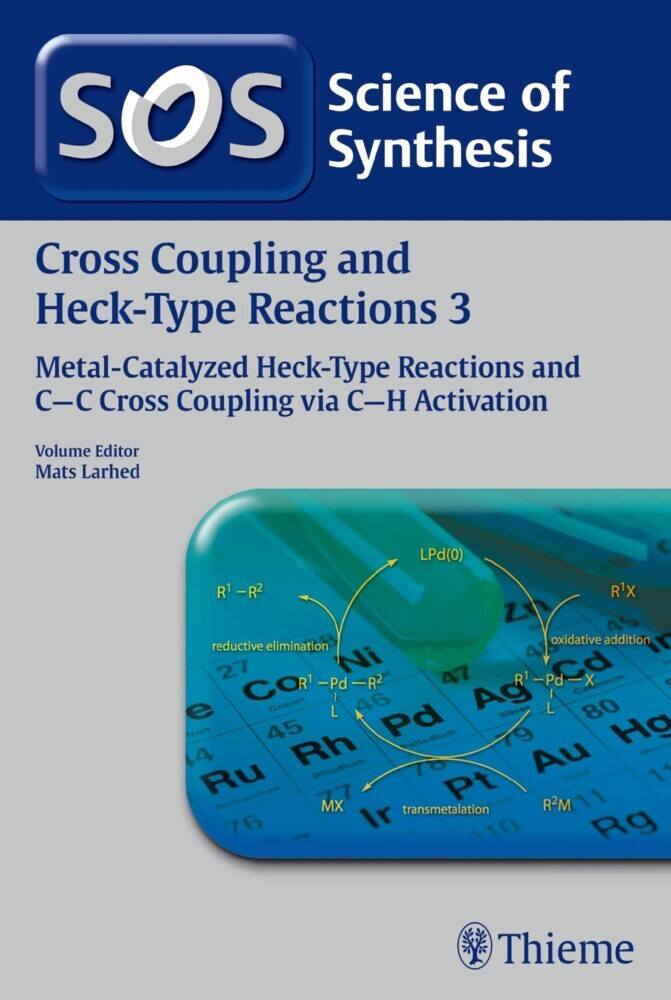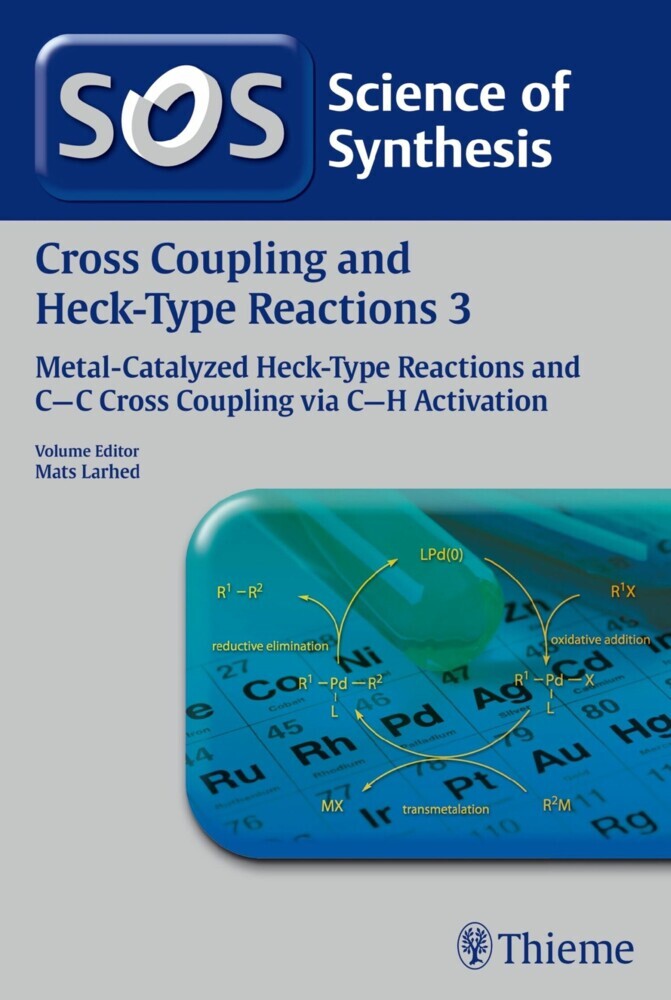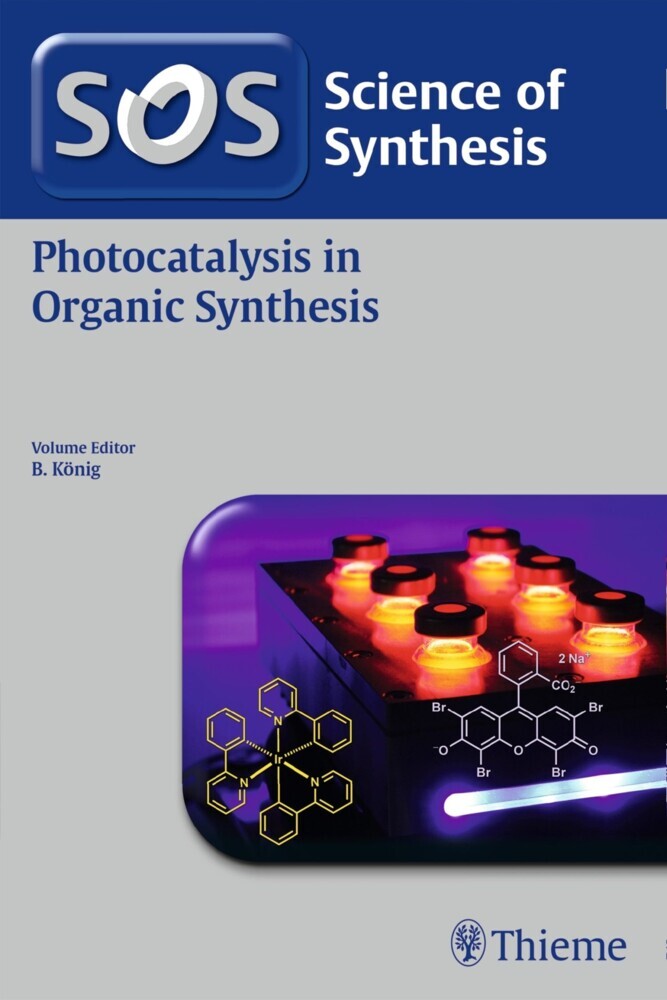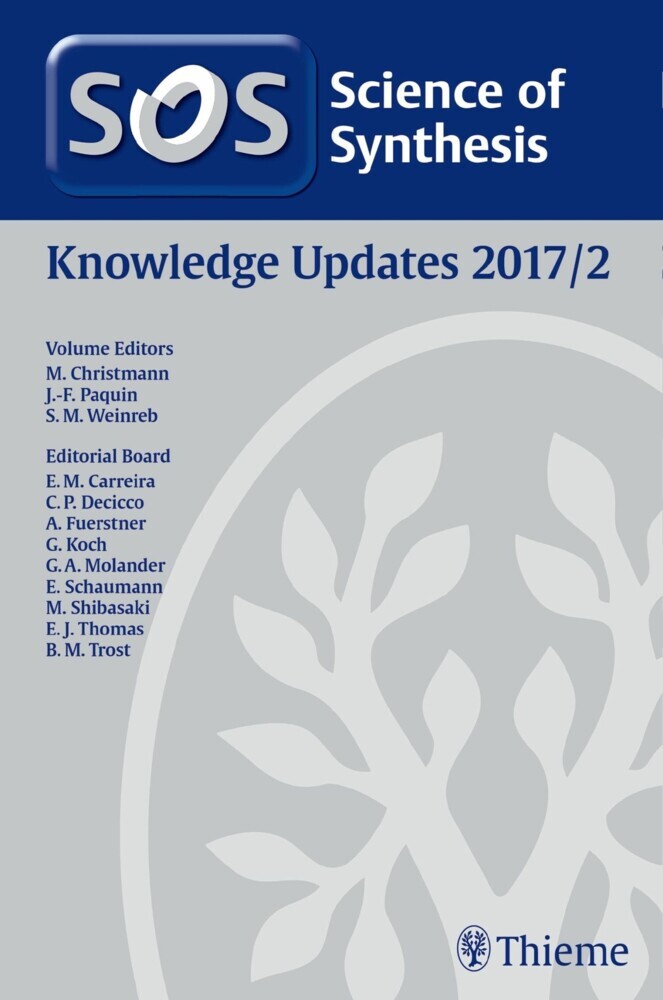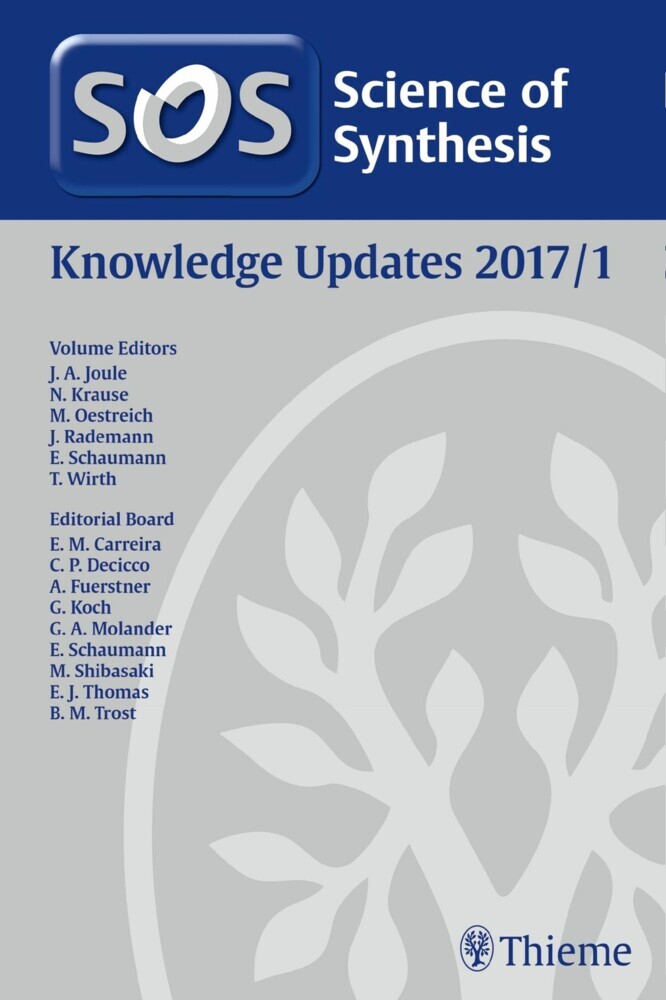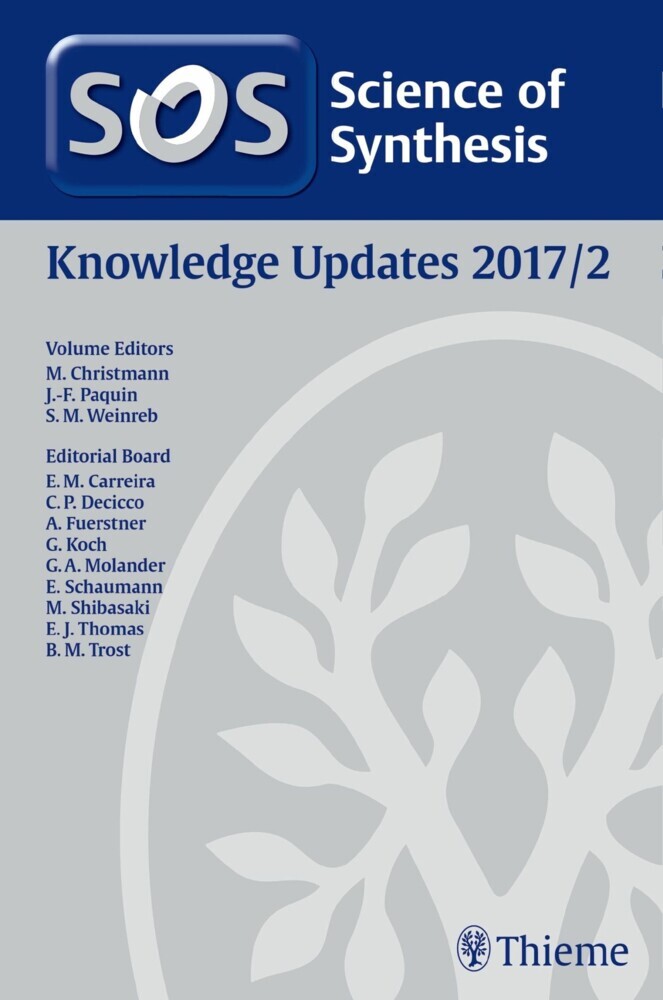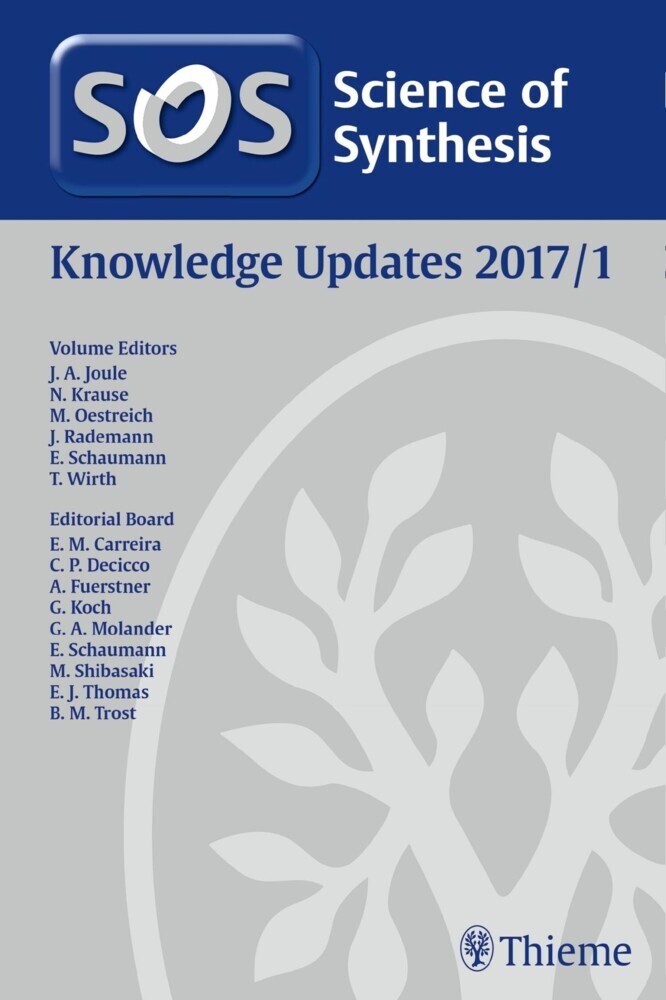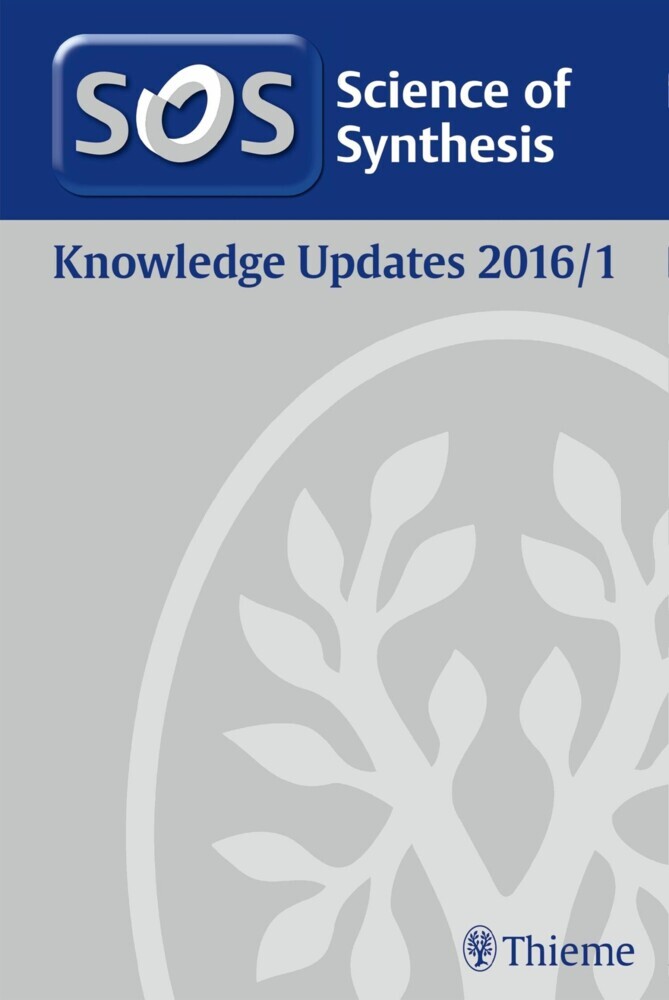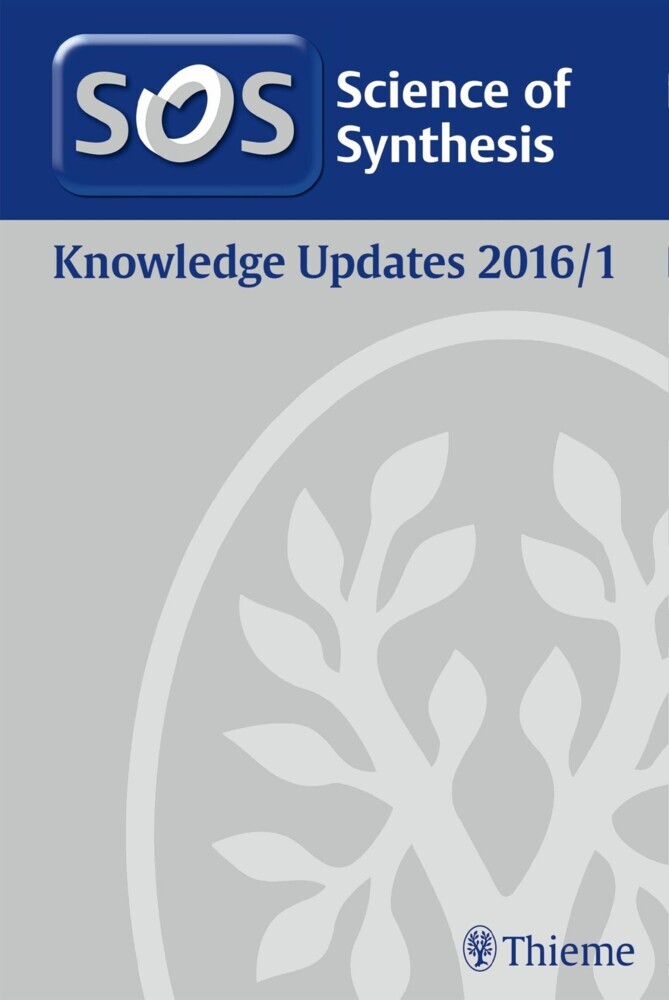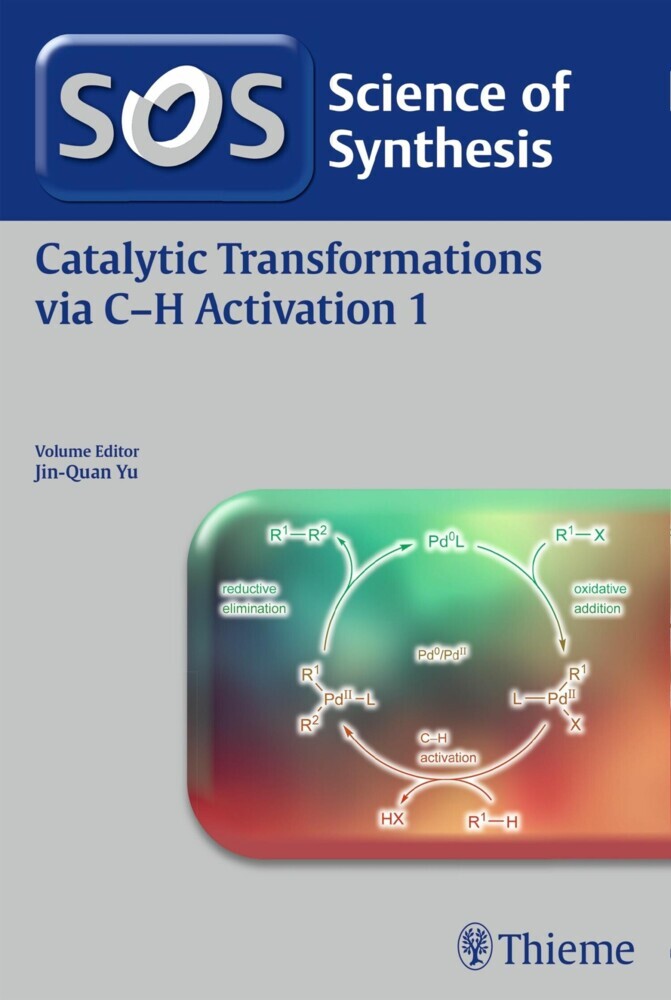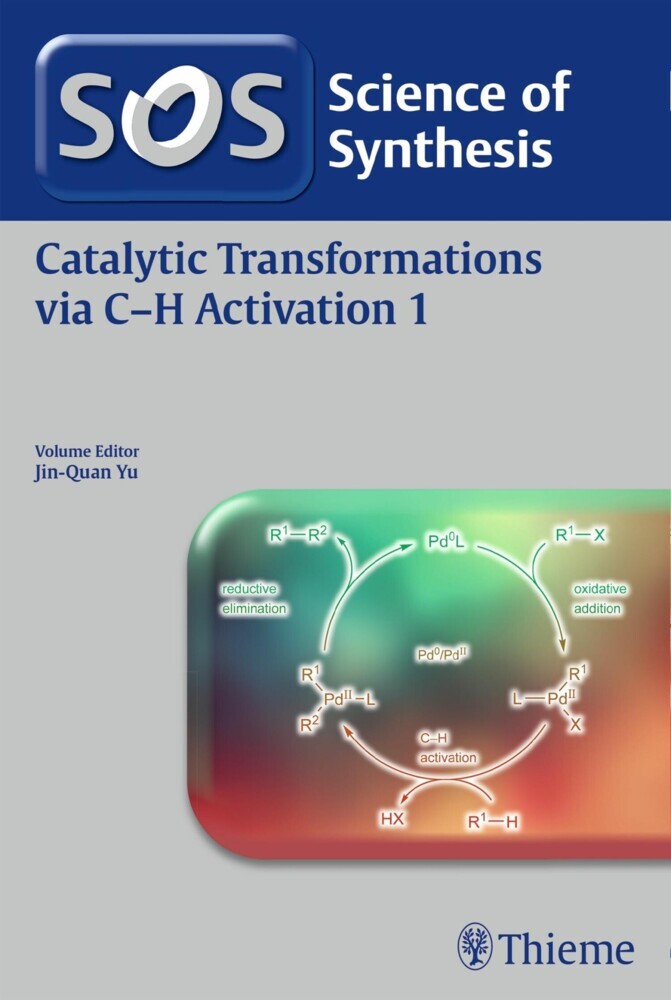Science of Synthesis: Cross Coupling and Heck-Type Reactions Vol. 3
Science of Synthesis: Cross Coupling and Heck-Type Reactions Vol. 3
In Science of Synthesis: Cross Coupling and Heck-Type Reactions, expert authors present and discuss the best and most reliable methods currently available for the formation of new carbon-carbon and carbon-heteroatom bonds using these reactions, highlighted with representative experimental procedures. Together, the three volumes of Cross Coupling and Heck-Type Reactions provide an extensive overview of the current state of the art in this field of central importance in modern chemistry, and are an invaluable resource for the practicing synthetic organic chemist.
This volume provides comprehensive coverage of the different classes of Heck-type reactions. It describes the state-of-the-art developments in each area whilst critically evaluating the strengths and weaknesses of the different methods. In accordance with the growing demand for synthetic efficiency and practicality in organic synthesis, many of these newly developed Heck-type methods feature operationally convenient conditions, high catalytic efficiency, and high levels of chemical, regiochemical, and stereochemical control. Metal-catalyzed C-H functionalization has also been developed into a powerful tool for organic synthesis, providing for original C-C disconnections in retrosynthetic analysis and improving the overall efficiency of the desired transformations. This volume also summarizes the most important concepts and methods in this hot research area.
This volume is part of a 3-volume set:
Cross Coupling and Heck-Type Reactions Workbench Edition
General information about Science of Synthesis
1;Science of Synthesis: Cross Coupling and Heck-Type Reactions 3 - Metal-Catalyzed Heck-Type Reactions and C-C Cross Coupling via C-H Activation;1 1.1;Organizational Structure of Science of Synthesis;2 1.2;Science of Synthesis Reference Library;3 1.3;Title page;5 1.4;Imprint;7 1.5;Preface;8 1.6;Volume Editor's Preface;10 1.7;Cross Coupling and Heck-Type Reactions Volumes;12 1.8;Abstracts;14 1.9;Overview;22 1.10;Table of Contents;24 1.11;Introduction;40 1.12;3.1 Heck Reactions;46 1.12.1;3.1.1 Intermolecular Reactions;46 1.12.1.1;3.1.1.1 Electron-Poor Alkenes as Reaction Components;;46 1.12.1.1.1;3.1.1.1.1 Reaction with Aryl or Hetaryl Halides or Pseudohalides;;46 1.12.1.1.1.1;3.1.1.1.1.1 Arylation of Alkenes Carrying at Least One Keto, Ester, Nitrile, or Amide Group;46 1.12.1.1.1.1.1;3.1.1.1.1.1.1 Arylations with Aryl Halides;47 1.12.1.1.1.1.1.1;3.1.1.1.1.1.1.1 With Iodoarenes or Bromoarenes;47 1.12.1.1.1.1.1.1.1;3.1.1.1.1.1.1.1.1 With Resin-Bound Aryl Halides;71 1.12.1.1.1.1.1.1.2;3.1.1.1.1.1.1.1.2 Arylations in Ionic Liquids;73 1.12.1.1.1.1.1.1.3;3.1.1.1.1.1.1.1.3 Continuous-Flow Heck Arylation;76 1.12.1.1.1.1.1.1.4;3.1.1.1.1.1.1.1.4 Substrates Carrying More than One Keto, Ester, Nitrile, or Amide Group;77 1.12.1.1.1.1.1.2;3.1.1.1.1.1.1.2 With Chloroarenes;78 1.12.1.1.1.1.2;3.1.1.1.1.1.2 Hetarylations with Hetaryl Halides;81 1.12.1.1.1.1.3;3.1.1.1.1.1.3 Arylations with Other Electrophiles;89 1.12.1.1.1.1.3.1;3.1.1.1.1.1.3.1 With Diazonium Salts;89 1.12.1.1.1.1.3.2;3.1.1.1.1.1.3.2 With Iodonium Salts;97 1.12.1.1.1.1.3.3;3.1.1.1.1.1.3.3 With Aryl Trifluoromethanesulfonates;99 1.12.1.1.1.2;3.1.1.1.1.2 Arylation of Alkenes Carrying at Least One Sulfoxide, Sulfone, Sulfonate, or Sulfinate Group;100 1.12.1.1.1.2.1;3.1.1.1.1.2.1 Arylations with Aryl Halides;100 1.12.1.1.1.2.2;3.1.1.1.1.2.2 Arylations with Arenediazonium Salts;101 1.12.1.1.1.3;3.1.1.1.1.3 Arylation of Alkenes Carrying at Least One Phosphonic, Phosphinic, Nitro, or Nitroso Group;103 1.12.1.1.1.3.1;3.1.1.1.1.3.1 Arylations with Aryl Halides;103 1.12.1.1.1.3.2;3.1.1.1.1.3.2 Arylations with Arenediazonium Salts;104 1.12.1.1.1.4;3.1.1.1.1.4 Arylation of Alkenes Carrying at Least One Halomethyl Group;105 1.12.1.1.1.5;3.1.1.1.1.5 Arylation of Alkenes Carrying at Least One Aryl Group;107 1.12.1.1.1.5.1;3.1.1.1.1.5.1 Arylations with Aryl Halides;107 1.12.1.1.1.5.2;3.1.1.1.1.5.2 Arylations with Other Arylating Agents;108 1.12.1.1.1.6;3.1.1.1.1.6 Arylation of Alkenes Carrying at Least One Hetaryl Group;109 1.12.1.1.1.6.1;3.1.1.1.1.6.1 Hetarylations with Hetaryl Halides;110 1.12.1.1.2;3.1.1.1.2 Reaction with (Het)Arylmetals or (Het)Arenes;114 1.12.1.1.2.1;3.1.1.1.2.1 Reaction with (Het)Arylmetals;116 1.12.1.1.2.1.1;3.1.1.1.2.1.1 Reaction with Arylmercury Reagents;116 1.12.1.1.2.1.2;3.1.1.1.2.1.2 Reaction with Arylstannane Reagents;118 1.12.1.1.2.1.3;3.1.1.1.2.1.3 Reaction with Arylsilane Reagents;120 1.12.1.1.2.1.4;3.1.1.1.2.1.4 Reaction with Arylboronic Acids and Derivatives;121 1.12.1.1.2.1.5;3.1.1.1.2.1.5 Reaction with Other Electrophilic Reagents;129 1.12.1.1.2.2;3.1.1.1.2.2 Reaction with (Het)Arenes;131 1.12.1.1.2.2.1;3.1.1.1.2.2.1 Reaction with Benzene or Electron-Rich (Het)Arenes;132 1.12.1.1.2.2.2;3.1.1.1.2.2.2 Reaction with Electron-Deficient (Het)Arenes;134 1.12.1.1.2.3;3.1.1.1.2.3 Non-Palladium-Catalyzed Reactions;137 1.12.1.1.3;3.1.1.1.3 Reaction with Arene- or Hetarenecarboxylic Acids or Derivatives, or Related Compounds;142 1.12.1.1.3.1;3.1.1.1.3.1 Decarbonylative Reactions of Arenecarboxylic Acid Derivatives;142 1.12.1.1.3.1.1;3.1.1.1.3.1.1 Reaction with Aroyl Chlorides;143 1.12.1.1.3.1.2;3.1.1.1.3.1.2 Reaction with Arenecarboxylic Anhydrides;146 1.12.1.1.3.1.3;3.1.1.1.3.1.3 Reaction with Arenecarboxylates;148 1.12.1.1.3.2;3.1.1.1.3.2 Decarboxylative Reactions of Arenecarboxylic Acids;151 1.12.1.1.3.2.1;3.1.1.1.3.2.1 Reaction Using Palladium Catalysis;152 1.12.1.1.3.2.2;3.1.1.1.3.2.2 Reaction Using Rhodium Catalysis;
| ISBN | 9783131790910 |
|---|---|
| Artikelnummer | 9783131790910 |
| Medientyp | E-Book - PDF |
| Copyrightjahr | 2014 |
| Verlag | Georg Thieme Verlag KG |
| Umfang | 933 Seiten |
| Sprache | Englisch |
| Kopierschutz | Digitales Wasserzeichen |

